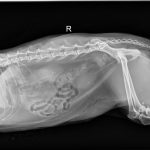Hello
I’m so sorry to hear about your cat. Can you please go to my blog and see all of the articles I have there for this? I literally have documents that you can use as a step by step guide to try to get help that is both affordable and helpful. Kmdvm.blogspot.com














I would say get your vet involved, and/or a veterinary dietician if there’s one near you. There’s a lot more leeway with dogs than with cats, but I’d be very careful about making sure they get the right balance of nutrition without overdosing them on anything.
Oh, avoid legumes. There’s a link between heavy legume inclusion and dilated cardiomyopathy, which is something I wouldn’t wish on anyone.
Lots of folks go with a raw diet. This seems to be somewhat controversial in vet circles (Dr. Magnifico will weigh in on this when she sees it), but it’s another feeding method that requires a lot of research first.